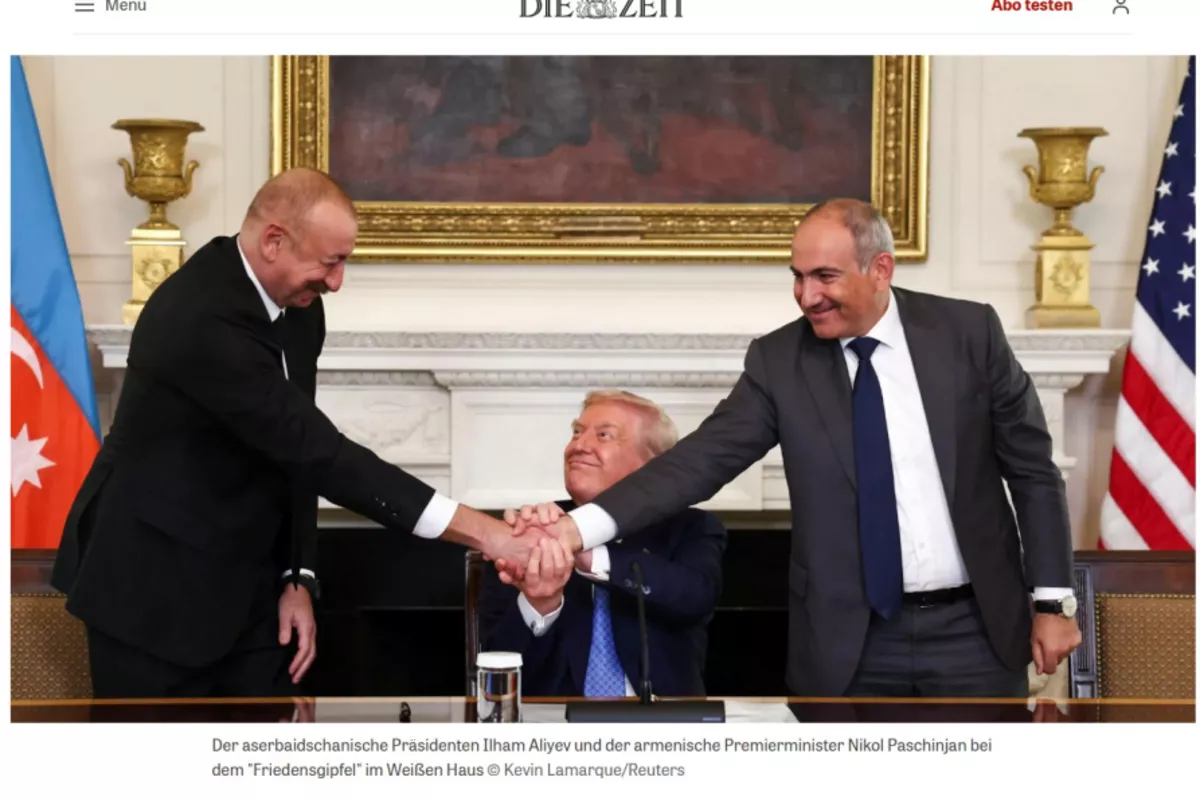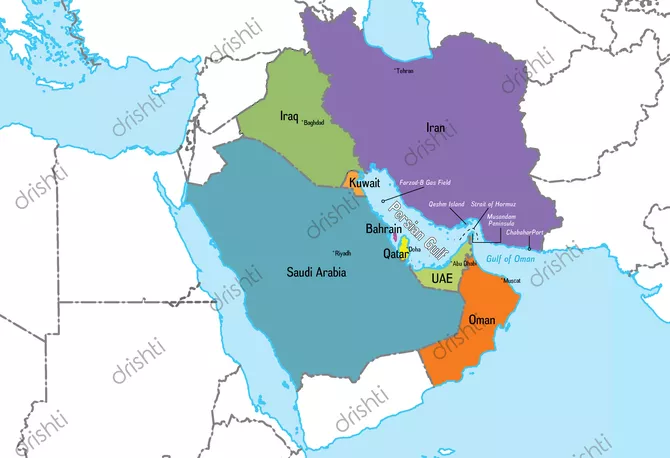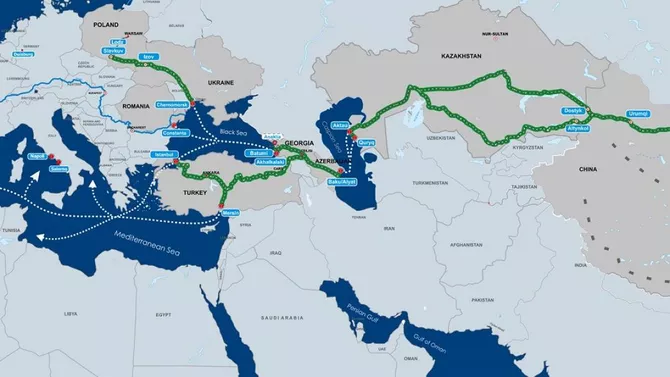
The peace deal between Armenia and Azerbaijan, signed under the auspices of President Trump on August 8, 2025, in Washington, D.C., marks an important step toward greater stability in the South Caucasus.
For the Gulf states, the agreement carries significance beyond the immediate region, opening pathways into a geostrategically vital corridor linking Europe and Asia, The Caspian Post informs via Gulf Research Center.

As Gulf countries continue to consolidate their roles as middle powers and deepen their engagement in Eurasian affairs, the Caucasus presents both an opportunity and a responsibility: contributing to the stabilization of this transit hub could enhance trade and energy connectivity while strengthening the Gulf’s role as constructive partners in conflict resolution and post-conflict recovery.
From a Gulf perspective, the peace deal aligns with several overarching objectives: diversifying economic linkages beyond hydrocarbons, reinforcing connectivity through new trade corridors, and investing in reconstruction as a means of political influence. For Saudi Arabia, the UAE, and Qatar, the stability of the Caucasus resonates with their ambition to act as bridges between regions and to extend their reach across the Eurasian landmass. The deal is viewed less as a bilateral resolution and more as part of a wider Eurasian integration process in which the Gulf can play a role.
The United Arab Emirates played an early role in creating space for dialogue by hosting an initial meeting in July 2025 between His Excellency Ilham Aliyev, President of the Republic of Azerbaijan, and His Excellency Nikol Pashinyan, Prime Minister of the Republic of Armenia. The discussions, held in Abu Dhabi, focused on bilateral relations and ways to foster trust and promote stability in the South Caucasus. His Highness Sheikh Mohamed bin Zayed Al Nahyan, President of the UAE, held separate meetings with both leaders and welcomed their decision to meet in the UAE. By emphasizing dialogue, multilateral cooperation, and stability, the UAE created the space where regional leaders could take initial steps toward reconciliation. This engagement provided diplomatic momentum that helped pave the way for the eventual agreement reached in Washington.
Moreover, Gulf states appreciate the symbolic value of the peace deal. As early as March 2025, GCC Secretary-General H.E. Jasem Albudaiwi had welcomed the progress of negotiations between Armenia and Azerbaijan, expressing hope that the agreement would mark a new phase of cooperation, mutual respect, and stability between the two countries. A conflict-prone area stabilizing through negotiation and compromise underscores the kind of pragmatic conflict-resolution ethos that Gulf diplomacy increasingly champions. The Gulf can also draw parallels with its mediation roles in the Horn of Africa and Afghanistan, reinforcing its image as a responsible actor capable of contributing to regional and global stability.
Trade Connectivity and the Middle Corridor
The most immediate Gulf interest in the peace deal lies in trade connectivity. The South Caucasus is central to the so-called Middle Corridor, the trans-Caspian route connecting China to Europe via Central Asia, the Caspian Sea, the Caucasus, and Türkiye. For Gulf states, this corridor is not only a matter of economic opportunity but also of strategic resilience. As tensions persist in the Red Sea and the Suez Canal remains a chokepoint vulnerable to disruption, as seen during the 2021 Ever Given crisis that blocked the Suez Canal and more recent Houthis-linked threats, diversification of trade routes has become a strategic necessity. The Gulf’s long-term economic visions explicitly emphasize global logistics leadership, and the Middle Corridor aligns with these ambitions.
For Gulf sovereign wealth funds and logistics firms, the Caucasus region also offers a promising arena for investment in ports, railways, and logistics hubs. The UAE’s DP World, already active in Central Asia and the Caucasus through projects in Kazakhstan, Azerbaijan, and Georgia, could further expand its footprint by managing terminals and intermodal facilities along the route. Saudi Arabia’s Public Investment Fund (PIF), with its growing focus on infrastructure and transport diversification, could find opportunities not only in rail connectivity projects or energy transport pipelines running through the Caucasus to Türkiye and onward to Europe, but also in linkages that extend further into Central Asia. This aligns with the GCC’s recent summit commitments, which emphasised the importance of developing connected transportation routes between the two regions, building strong logistical and commercial networks, and developing effective systems that contribute to the exchange of products. Similarly, the Qatar Investment Authority (QIA), leveraging Doha’s experience in LNG trade and shipping, could invest in freight infrastructure, customs modernization, and digital trade facilitation platforms that strengthen both Caucasus-Europe routes and Central Asia-GCC connectivity.

Energy is another dimension where Gulf perspectives converge with the peace dividend. The South Caucasus is already a critical transit route for Caspian hydrocarbons, particularly Azerbaijani oil and gas flowing westward to Türkiye and Europe. As Europe seeks to diversify away from Russian energy, Azerbaijan’s role grows, and by extension, so does the significance of secure transit through the Caucasus. A stable Armenia-Azerbaijan relationship strengthens the security of these routes and creates opportunities for Gulf states to align their strategies with the region’s energy potential. For example, Qatar’s LNG exports to Europe benefit from a diversified supply environment. At the same time, Gulf producers may find synergies in partnering with Azerbaijan on energy infrastructure, storage, and renewable projects, in line with their global push toward energy diversification.
The Caucasus also provides Gulf states with a platform to practice delicate diplomatic balancing. By engaging with Türkiye’s expanding influence in the region while simultaneously deepening ties with Russia, China, and Central Asia, each a stakeholder in the evolving Eurasian order, the Gulf can position itself as a constructive and flexible actor. Gulf national oil companies such as Saudi Aramco, ADNOC, and QatarEnergy could leverage this environment to expand cooperation not only in hydrocarbons but also in renewables and green energy corridors, reinforcing their image as forward-looking energy players.
Equally important, stability in Armenia-Azerbaijan relations removes one of the key political and security obstacles to the reliability of the Middle Corridor, making it a more attractive proposition for Gulf investors. A secure South Caucasus could integrate more seamlessly with existing Gulf-Central Asia cooperation frameworks, while also complementing Gulf investments in Pakistan’s Gwadar Port, Oman’s Duqm Port, and Egypt’s Suez Canal Economic Zone. In this way, both trade and energy corridors through the Caucasus are viewed not in isolation but as part of a broader Gulf strategy to position itself as a central node in Eurasian and global trade networks.
Aligning with Broader Eurasian Strategies
The peace deal is not an isolated development but part of larger Eurasian reconfigurations. For the Gulf, integrating with these shifts is key. The Middle Corridor is one piece of a puzzle that includes China’s Belt and Road, the EU’s search for secure supply chains, and Russia’s recalibration of its regional posture. Gulf states, by aligning their investments and diplomacy with these frameworks, can magnify their influence.
Crucially, Gulf countries can leverage their partnerships with both Western and Eastern powers to ensure that their role in the Caucasus contributes to cooperative rather than competitive dynamics. Their capacity to act as financial investors, diplomatic mediators, and energy suppliers provides them with a unique toolkit for embedding themselves in the future architecture of the region.
From a Gulf perspective, the Armenia-Azerbaijan peace deal extends beyond a bilateral settlement; it holds the potential to advance wider integration into Eurasian trade, energy, and security frameworks. By contributing to the stabilization of a key transit hub, the agreement strengthens the viability of the Middle Corridor, enhances the security of energy flows, and opens space for constructive Gulf engagement. Yet sustaining the peace will require active political support. While the United States oversaw the signing, Washington is unlikely to invest much capital to ensure its durability. This creates an important opening for GCC states, which can leverage their diplomatic reach, convening power, and balanced relations to help guarantee the agreement holds, positioning themselves as credible stabilizers in the South Caucasus and as proactive middle powers shaping the wider Eurasian order.
By Senior Research Associate at the Gulf Research Center (GRC) Layla Ali
Share on social media